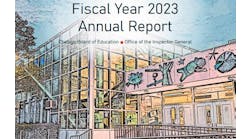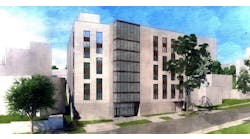Perhaps one of the most important things in regard to implementing technology in schools is also the most overlooked and underappreciated: cabling. Cabling is the underpinning of networks-wide-area networks, local-area networks, cable TV, intranets and the Internet. How well the cabling infrastructure is planned today determines how fast the technology information teachers and students will need tomorrow can be obtained.
Cabling as infrastructure
Designing a cabling system that just complies with today's standards can result in an infrastructure that may be obsolete in two or three years. Therefore, always put in too much cabling; it never will be enough. Because the system will only be as strong as the weakest link, put in the highest quality cabling, components and hardware. Also, keep in mind that cabling does go bad, so figure on having extra wire.
The evolution and growth of applications and new technologies are driving the need for higher-value and higher-performance premise cabling. Cabling must meet the needs of today's applications and prepare for future high-speed applications of 622 Mbps and beyond.
It was never expected that the industry could develop copper cabling better and faster than category 5, but they have. Advances in speed and functionality of copper and fiber to the workstation have given educators capabilities only dreamed of in the past. Now, information moves at speeds considered impossible only a few years ago. Several manufacturers are providing 15-year performance warranties on well-engineered performance-verified total cabling systems. Manufacturers of category 5, 6 and 7 copper cables are supplying cables that cover the entire spectrum from DC to 1.2 GHz and higher.
The next millennium
As we approach the next millennium, it is interesting to look back at how rapidly telecommunications technologies have changed in the last decade. Ten years ago, many in this business thought that 100 MHz/100 Mbps on copper cabling was unattainable. Today, we discuss 155 Mbps, 622 Mbps and eventually attaining 1,000 Mbps. Subjects discussed daily include 10BASE-T, 100BASE-TX, ATM and GHz ethernet.
When preparing to install the cabling infrastructure, past practices must be re-examined, re-evaluated and, in most cases, abandoned in favor of new methods and techniques. Whatever surprises may be waiting, few would doubt that copper and fiber-optic cabling will form the physical foundation upon which these information networks will be established.
A school wants its structured cable system to last for at least 15 years. The system should be expected to meet the normal demands placed on today's system, as well as tomorrow's challenges. Today's high-performance network cables are much more sensitive than older voice and low-speed data telecommunication cables. The new cables are extremely susceptible to external influences such as unwanted signal noise, NEXT (crosstalk, near or far end), EMI/RFI (electromagnetic interference/radio frequency interference), and extreme temperature variances, to name a few.
Cabling is not created equal
All category 5 cables meet the basic requirements established for today's network needs. However, among these cables, there is a considerable difference in maximum performance. Remember that category 5 criteria is a minimum benchmark, and it may be wise to specify or buy components and materials that exceed these minimums.
At present, asynchronous transfer mode (ATM) is popular because it provides scaleable performance from 25 Mbps to 622 Mbps, depending on the media chosen. ATM was designed to carry data, voice and video, and its switched technology also avoids bandwidth contention.
Fast ethernet (100BASE-T) provides 100 Mbps speeds and uses category 5 UTP. It is being used mostly for connection of server farms and for 100 Mbps dedicated port switching where high-bandwidth is needed. The use of fast ethernet for backbone technologies has some limiting distance factors relating to collision domains. Gigabit ethernet (1000BASE-T) is evolving and will take some time to become mature enough to use as a backbone. The future of gigabit ethernet is still debatable, especially for backbone use.
One of the most crucial decisions to be made when designing education facilities is which cable infrastructure will support independent technologies and multiple vendor products.
It is a generally recognized industry fact that approximately 70 percent of network downtime is due to cabling improprieties. This usually can be attributed to poor selection of wire, terminations and connections.

